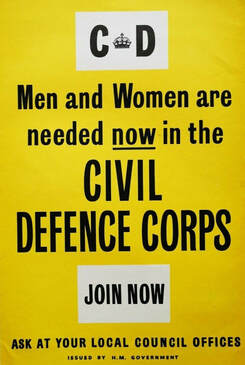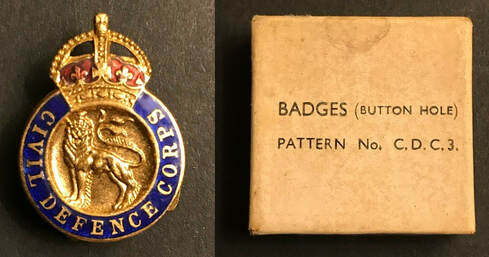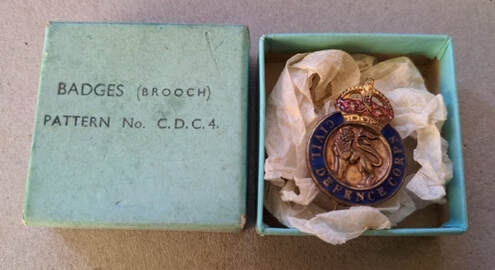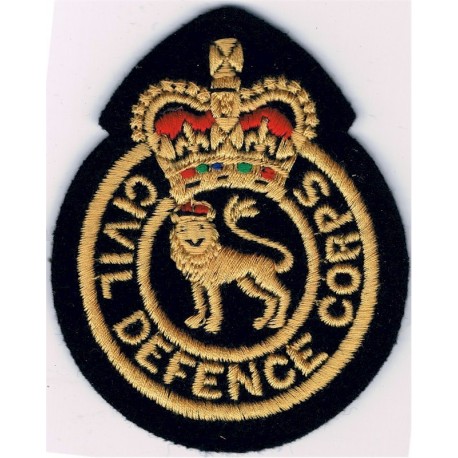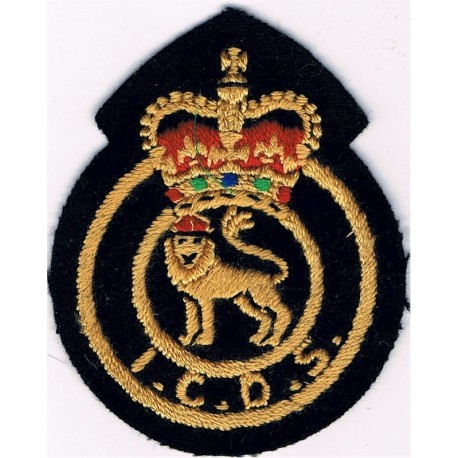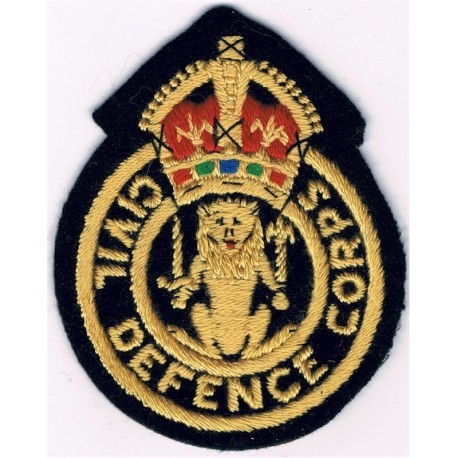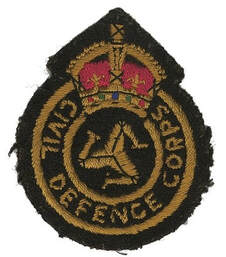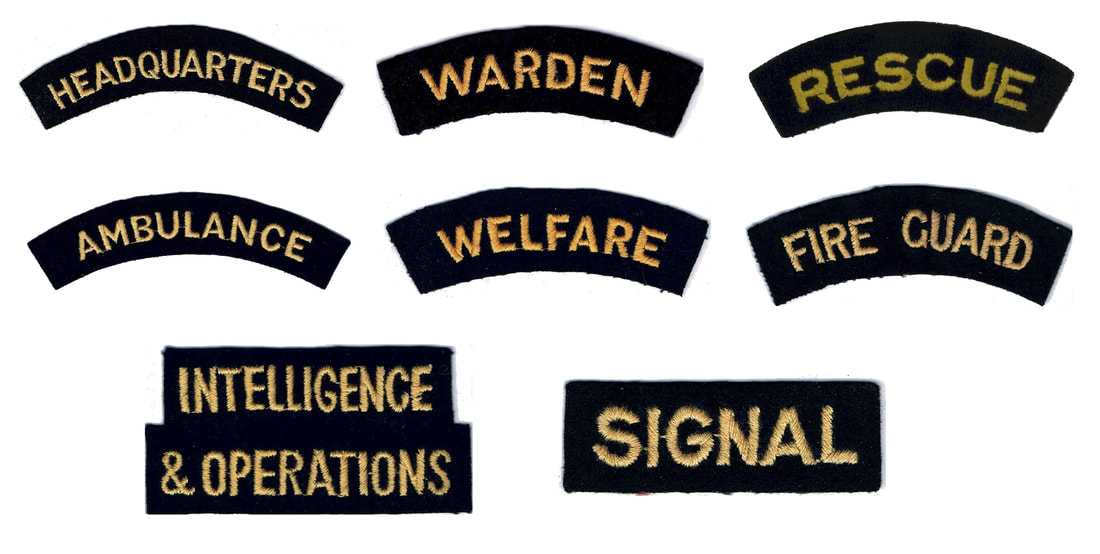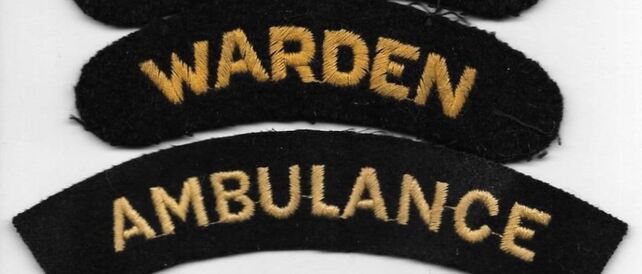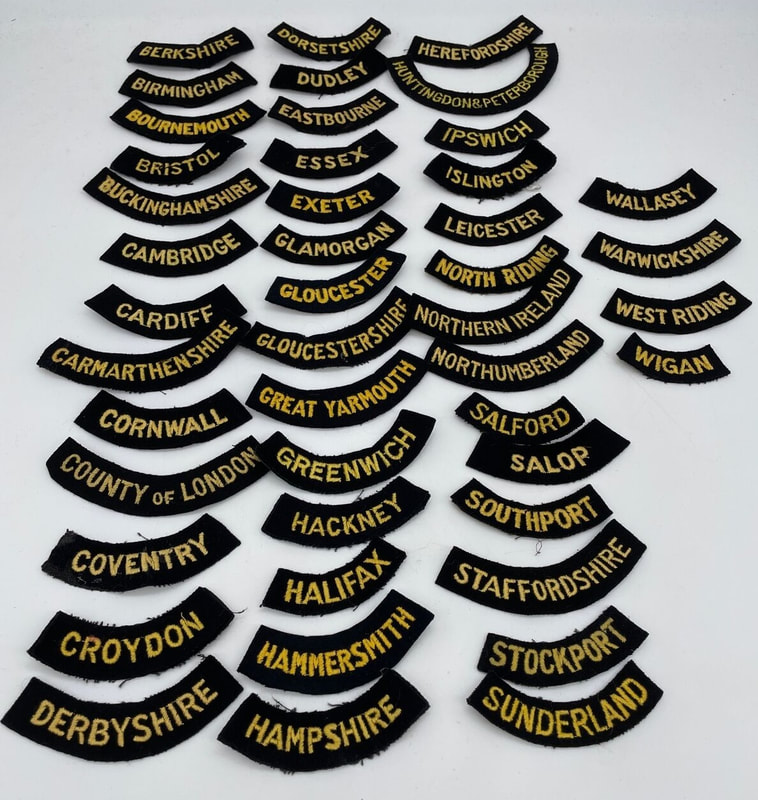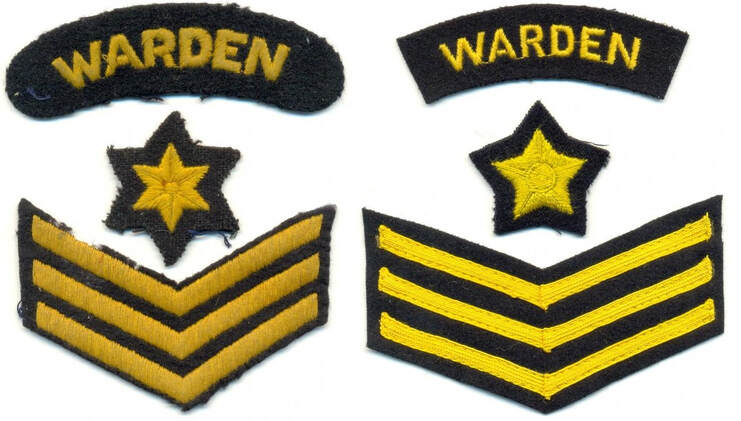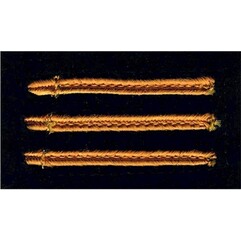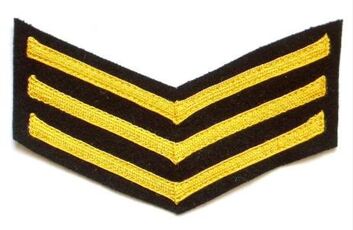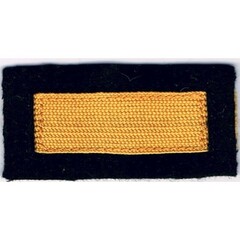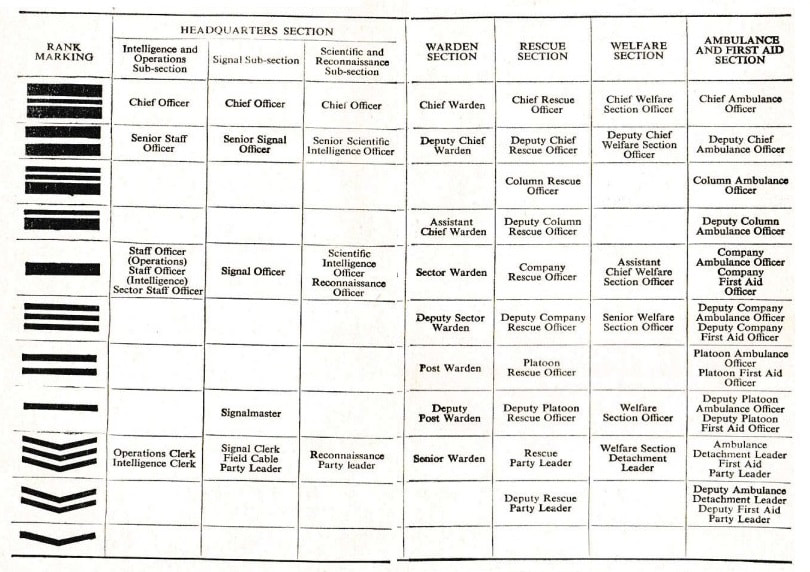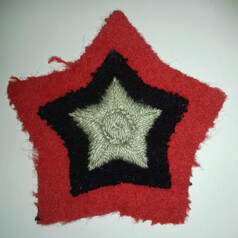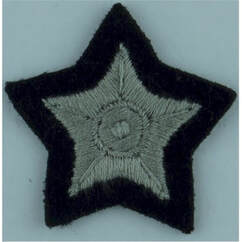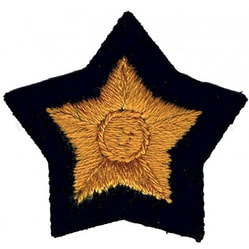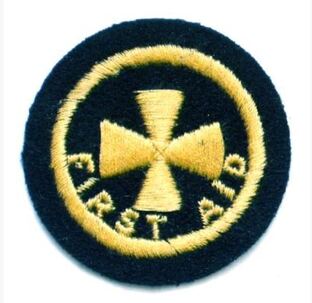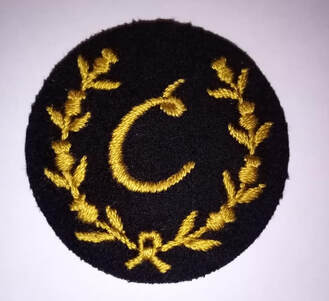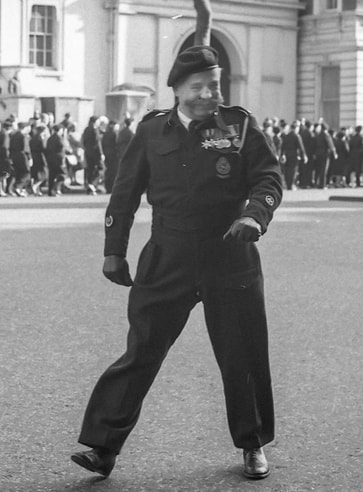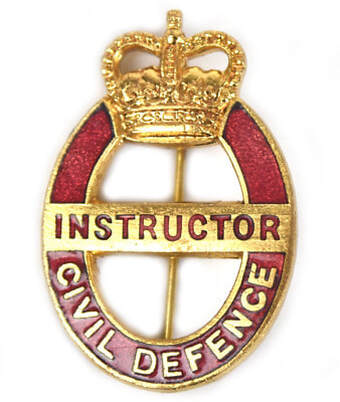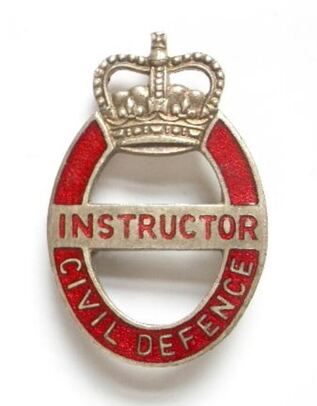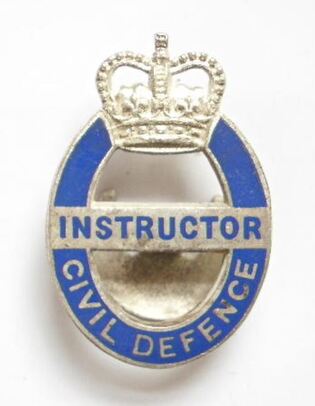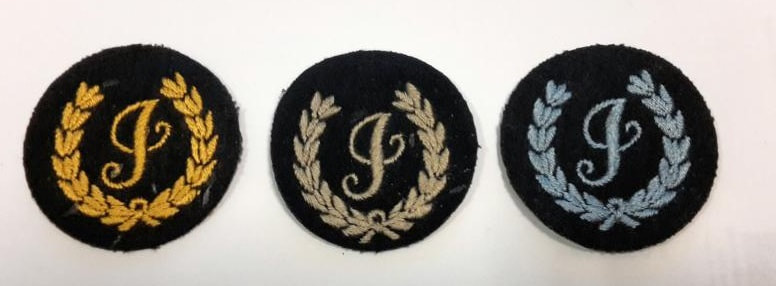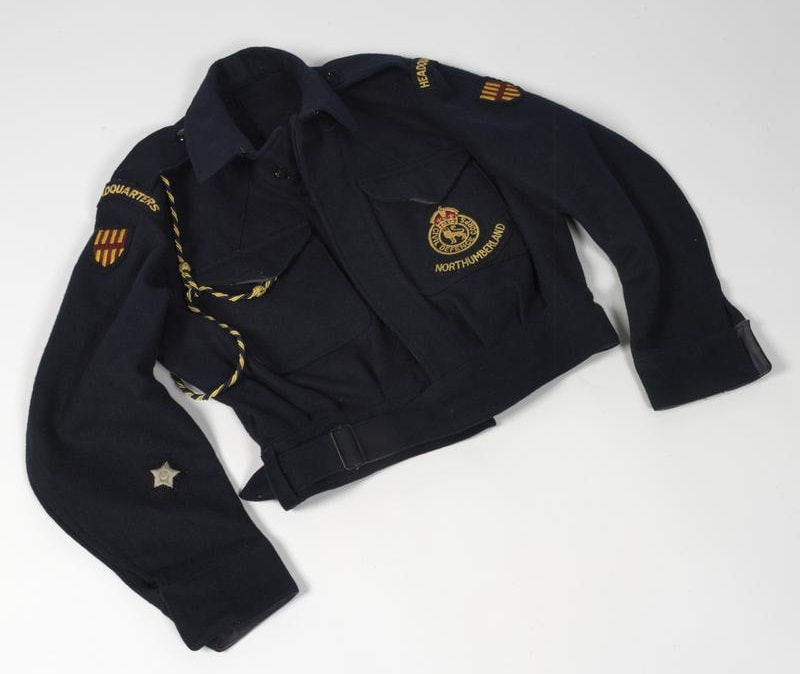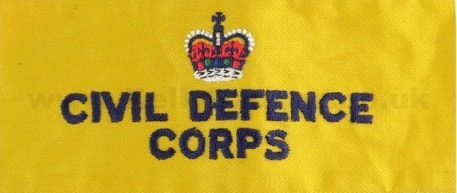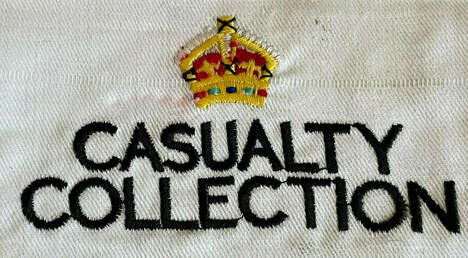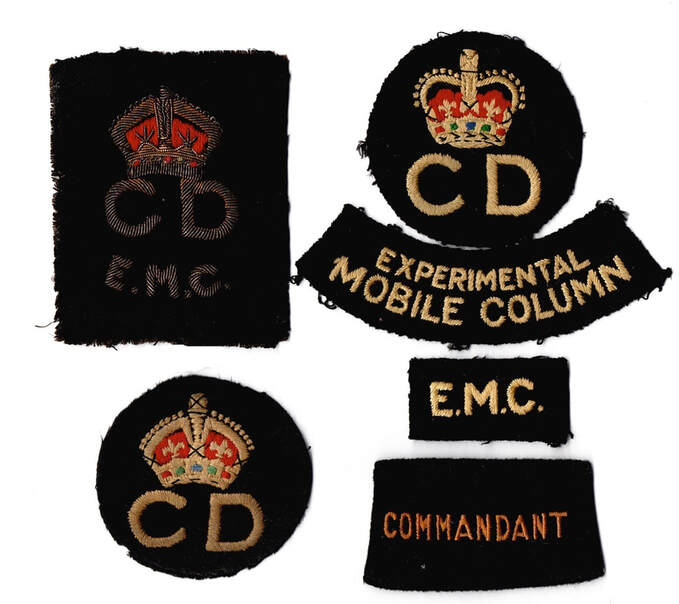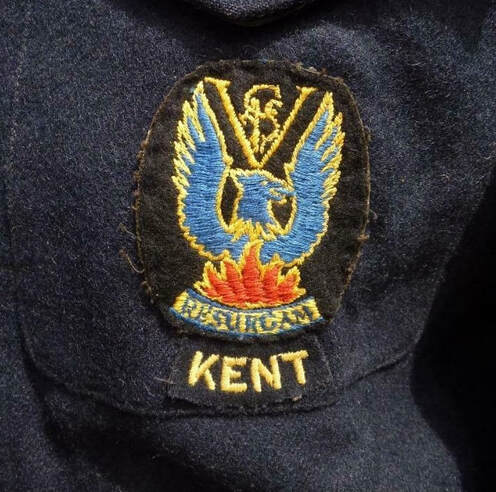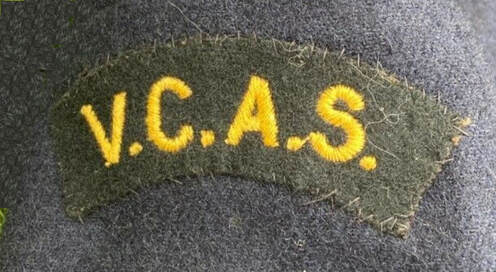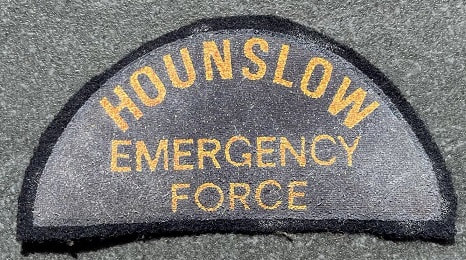Post-war Civil Defence Corps Badges & Insignia 1949-1968
|
During the Second World War the Civil Defence Services worked to alleviate issues caused by enemy bombing. This service was stood down in May 1945.
With the growing tensions of the Cold War, in 1949* the Civil Defence Corps (CDC) was set up to be mobilised within and to control an area following a major national emergency, principally envisaged as being a nuclear attack. It was stood down in Great Britain in 1968 (although the Isle of Man Civil Defence Corps remains active). The CDC was a voluntary organistion. I often get asked about various examples of Civil Defence insignia and quite a few items are from the Civil Defence Corps. A lot are unfortunately sold as being from the Second World War and this confuses some new collectors and a lot of re-enactors. Some re-enactors also wear a mix of wartime and post-war CD insignia. * The Civil Defence Act was passed in December 1948 but the Corps really started in 1949. |
Civil Defence Corps Pattern No. C.D.C. 3 Button Hole Lapel Badge
Probably the most ubiquitous badge of the Civil Defence Corps found is the small lapel badge. The emblem in the centre was changed for groups outside of England and Wales. The button hole - with the half moon rear fixing was for issue to men.
Civil Defence Corps Pattern No. C.D.C. 4 Brooch
For women who joined the Civil Defence Corps a brooch badge was issued with a pin and catch rear fixing.
Civil Defence Corps Breast Badges
These are the simplest to discern as they actually have Civil Defence Corps written on them. Worn on the battledress pocket and also sewn onto a beret. The badge can be found with both the King's Crown and Queen's Crown (post-1953). England and Wales had a lion motif and Scotland a lion on haunches (note: it appears the Scottish badge always features the King's crown). The Isle of Man features the three-legged symbol (triskelion) with either the King's or Queen's crown.
The King's crown version of the badge remained in stores and was issued right into the 1960s. 1960s-dated berets can therefore have a King's crown badge attached, for example.
The King's crown version of the badge remained in stores and was issued right into the 1960s. 1960s-dated berets can therefore have a King's crown badge attached, for example.
Civil Defence Corps Shoulder Titles
Of all the Civil Defence Corps badges that cause confusion, the plethora of shoulder titles causes the most confusion. Placed at the tip of each shoulder the main way to differentiate post-war area tiles is the use of a much yellower thread than during the war.
Whilst the Civil Defence Corps used a number of titles found during the Second World War - WARDEN, RESCUE and AMBULANCE - they also introduced several new titles unique to the corps. These include HEADQUARTERS, SIGNAL, WELFARE, INTELLIGENCE & OPERATIONS and SCIENTIFIC & RECONNAISANCE.
Within the Industrial Civil Defence Service (ICDS) there were FIRST AID and FIRE GUARD sections (the fire guard titles are often confused with wartime versions (again look at the thread colour).
There was also the FOOD FLYING SQUAD that provided emergency feeding programmes.
Some claims are made for a ECONOMIC shoulder title. This is incorrect as these were issued as part of the Control Commission Germany insignia. PIONEER is also not a designated Civil Defence Corps shoulder title.
Whilst the Civil Defence Corps used a number of titles found during the Second World War - WARDEN, RESCUE and AMBULANCE - they also introduced several new titles unique to the corps. These include HEADQUARTERS, SIGNAL, WELFARE, INTELLIGENCE & OPERATIONS and SCIENTIFIC & RECONNAISANCE.
Within the Industrial Civil Defence Service (ICDS) there were FIRST AID and FIRE GUARD sections (the fire guard titles are often confused with wartime versions (again look at the thread colour).
There was also the FOOD FLYING SQUAD that provided emergency feeding programmes.
Some claims are made for a ECONOMIC shoulder title. This is incorrect as these were issued as part of the Control Commission Germany insignia. PIONEER is also not a designated Civil Defence Corps shoulder title.
Civil Defence Corps Divisional (Area) Markings
Every Civil Defence Corps (CDC) in the UK was issued with a divisional marking title (similar to wartime area markings). The arched upward CDC markings were to be worn directly below and curving around the CDC breast badge. Divisional markings for counties and large towns /burghs exist.
The Civil Defence Corps divisional markings are similar to those issued during the second world war but the colour is mor yellow than the 'old gold' used on wartime insignia. Post-war CDC divisional markings are often misidentified as wartime area markings.
The Metropolitan boroughs of London were covered by a single COUNTY OF LONDON divisional title (not used during the war as each borough issued their own title). There was also a NORTHERN IRELAND divisional marking to cover the six counties.
The Civil Defence Corps divisional markings are similar to those issued during the second world war but the colour is mor yellow than the 'old gold' used on wartime insignia. Post-war CDC divisional markings are often misidentified as wartime area markings.
The Metropolitan boroughs of London were covered by a single COUNTY OF LONDON divisional title (not used during the war as each borough issued their own title). There was also a NORTHERN IRELAND divisional marking to cover the six counties.
Civil Defence Corps Rank Badges
The Civil Defence Corps used similar ranking badges to those in the second world war such as chevrons and bars. However, they were made in a different material and a different shade of yellow. Rank chevrons (consisting of two and three chevrons) were issued for junior roles and officers used an expanded set of narrow and broad bars.
Civil Defence Corps officers wore their rank on the epaulette of their battledress (rather than on the upper arm during the war).
Proficiency (Bounty) Stars
Members of the Civil Defence Corps could undertake various training programmes. Progress through these would allow the wearing of stars on the bottom of the right sleeve, four inches from the cuff. Civil Defence Circular 9/1957 introduced three different proficiency badges, they all featured five points (WW2 stars were six pointed):
It has been often incorrectly stated that the red star backing was for a driver. This is simply wrong.
- Silver Star - indicated that a volunteer had completed standard training.
- Silver Star with Scarlet Flash - indicated that a volunteer having completed standard training, had undertaken additional training.
- Gold Star with Scarlet Flash - This indicated that a volunteer had successfully completed a course of additional training.
It has been often incorrectly stated that the red star backing was for a driver. This is simply wrong.
Civil Defence Corps First Aid Badge (England and Wales) & Casualty Warden (Scotland)
Those Civil Defence Corps members trained in first aid in England and Wales could wear a circular First Aid badge on the lower part of their left sleeve.
In Scotland there was a slightly different system in operation and Casualty Wardens wore the C in a laurel (again on the lower left sleeve). As the Scottish Ambulance Service carried out the functions of the Ambulance Section of the Civil Defence Corps in Scotland, casualty wardens were present to provide first aid cover until the Scottish Ambulance Service arrived to take over.
In Scotland there was a slightly different system in operation and Casualty Wardens wore the C in a laurel (again on the lower left sleeve). As the Scottish Ambulance Service carried out the functions of the Ambulance Section of the Civil Defence Corps in Scotland, casualty wardens were present to provide first aid cover until the Scottish Ambulance Service arrived to take over.
Civil Defence Corps Instructors' Enamel Badges
Introduced with CD Circular 19/1959, three Instructor badges became available for wear on civilian clothes (they all featured the Queen's crown):
- Gold (red enamel) - 'Special Pass' Certificate issued by Civil Defence Central Schools.
- Silver (red enamel) - 'Pass' Certificate issued by Civil Defence Central Schools.
- Blue - 'Pass' Certificate issued by Local Authority Schools.
Civil Defence Corps Instructors' Embroidered Badges
For wear on the battledress, on the lower left sleeve, embroidered badges in gold, silver and blue were available to all instructors. They featured the letter I inside a laurel.
Civil Defence Corps Lanyards & County Emblems
Although lanyards were not listed in the official uniform circulars, a number of photos show them being worn. Additionally, some counties allowed a county emblem to be worn on the upper shoulder - like the Northumberland shield emblem shown below.
Civil Defence Corps Yellow Armbands and Casualty Collection White Armband
Civil Defence Corps armbands are easy to date due the use of the CDC wording. Armbands include "AMBULANCE", "WARDEN", "WELFARE", "RESCUE", "HEADQUARTERS" and the rare "FOOD FLYING SQAUD" (run by the WVS). Armbands feature both the king's as well as queen's crown. The Casualty Collection armband is also post war.
Interestingly, regarding the Casualty Collection armband, a sealed pattern example of November 1955 still shows the continued use of a king's crown even after Elizabeth acceded to the throne in 1952.
Interestingly, regarding the Casualty Collection armband, a sealed pattern example of November 1955 still shows the continued use of a king's crown even after Elizabeth acceded to the throne in 1952.
Correct Wearing of Civil Defence Corps Uniform
Beret - the flat tilted to the right, badge on the left above the eye.
Battledress Blouse - to be fastened at the neck unless worn with a white shirt and collar with a black tie.
Footwear - boots and anklets for men, shoes for women.
Breast Badge - on the left breast pocket of the battledress blouse, centred between the two sides, the top level with the centre point of the pocket flap.
Section Titles - on each sleeve of the battledress blouse and greatcoat, 1/4 inch below the shoulder seam. Headquarters Section Sub-section titles are to be worn immediately below the Section title.
Divisional Markings - immediately below the breast badge on the battledress blouse.
Rank Markings - Bars - on each shoulder strap of the battledress blouse and greatcoat, the bottom of the lowest bar 1/4 inch above the shoulder seam. Chevrons - on each sleeve of the battledress blouse and greatcoat, the lowest point of the chevron 8 inches from the shoulder seam.
Instructor's Cloth Badges - on the right forearm between the two seams, the base 4 inches above the bottom of the sleeve, on both greatcoat and battledress blouse.
Medal Ribbons - above the flap of the left breast pocket of the battledress blouse.
Proficiency Badges - on the right sleeve of the battledress blouse midway between the two seams, the centre approximately 4 inches above the bottom of the sleeve. One point of the star should be vertical.
Armbands - on the upper left sleeve.
First Aid Badges - on the left sleeve of the battledress blouse midway between the two seams with the base of the badge 4 inches above the bottom of the sleeve. Members of the Corps who are also members of the Voluntary Aid Societies may wear the First Aid Badge of their Society instead of but not in addition to, the Corps First Aid Badge. Members of the Corps who are not members of the Voluntary Aid Societies, but have passed a Society test in first aid, may wear the badge thus gained instead of the Corps badge.
Voluntary Aid Societies - members who are also members of the Civil Defence Corps may wear the Voluntary Aid Society badge on the left forearm, the base 4 inches above the bottom of the sleeve. Women of the Welfare Section may, however, wear the uniform of their particular organisation (see Civil Defence Circular No.21/1956).
Women's Voluntary Services - members of the Women's Voluntary Services who are enrolled members of the Welfare Section of the Civil Defence Corps may wear the appropriate Women's Voluntary Service uniform (see Civil Defence Circular No. 12/1955).
Battledress Blouse - to be fastened at the neck unless worn with a white shirt and collar with a black tie.
Footwear - boots and anklets for men, shoes for women.
Breast Badge - on the left breast pocket of the battledress blouse, centred between the two sides, the top level with the centre point of the pocket flap.
Section Titles - on each sleeve of the battledress blouse and greatcoat, 1/4 inch below the shoulder seam. Headquarters Section Sub-section titles are to be worn immediately below the Section title.
Divisional Markings - immediately below the breast badge on the battledress blouse.
Rank Markings - Bars - on each shoulder strap of the battledress blouse and greatcoat, the bottom of the lowest bar 1/4 inch above the shoulder seam. Chevrons - on each sleeve of the battledress blouse and greatcoat, the lowest point of the chevron 8 inches from the shoulder seam.
Instructor's Cloth Badges - on the right forearm between the two seams, the base 4 inches above the bottom of the sleeve, on both greatcoat and battledress blouse.
Medal Ribbons - above the flap of the left breast pocket of the battledress blouse.
Proficiency Badges - on the right sleeve of the battledress blouse midway between the two seams, the centre approximately 4 inches above the bottom of the sleeve. One point of the star should be vertical.
Armbands - on the upper left sleeve.
First Aid Badges - on the left sleeve of the battledress blouse midway between the two seams with the base of the badge 4 inches above the bottom of the sleeve. Members of the Corps who are also members of the Voluntary Aid Societies may wear the First Aid Badge of their Society instead of but not in addition to, the Corps First Aid Badge. Members of the Corps who are not members of the Voluntary Aid Societies, but have passed a Society test in first aid, may wear the badge thus gained instead of the Corps badge.
Voluntary Aid Societies - members who are also members of the Civil Defence Corps may wear the Voluntary Aid Society badge on the left forearm, the base 4 inches above the bottom of the sleeve. Women of the Welfare Section may, however, wear the uniform of their particular organisation (see Civil Defence Circular No.21/1956).
Women's Voluntary Services - members of the Women's Voluntary Services who are enrolled members of the Welfare Section of the Civil Defence Corps may wear the appropriate Women's Voluntary Service uniform (see Civil Defence Circular No. 12/1955).
Civil Defence Corps Stand Down 1968
On 31 March 1968, the Civil Defence Corps (CDC), Industrial Civil Defence Service (ICDS), Auxiliary Fire Service (AFS) and the National Hospital Service Reserve (NHSR) were stood down and disbanded by the government.
Civil Defence Experimental Mobile Column
The Civil Defence Experimental Mobile Column was formed in January 1953 in answer to a call from central government for the establishment of a fast-response mobile squad of highly trained rescue personnel which could be rapidly deployed to any British town or city in the event of a nuclear attack.
Despite the overall success of the Experimental Mobile Column, the government of the day decided not to expand the scheme, and in December 1954, after just two years in existence, the Column was disbanded.
Despite the overall success of the Experimental Mobile Column, the government of the day decided not to expand the scheme, and in December 1954, after just two years in existence, the Column was disbanded.
Voluntary Civil Aid Service (VCAS)
The Voluntary Civil Aid Service (VCAS) was a very late 1960s civil defence group. It came into effect when the Civil Defence Corps was stood down in 1968 but was very short lived (disappearing in the early 1970s). Initially titled as the ‘National Voluntary Civil Aid Service’ later as VCAS, they adopted a shoulder title bearing VCAS and a breast badge of a phoenix rising from the ashes, with the motto ‘Resurgam’ (Latin for "I Am Rising Again"). Area titles for counties, towns and London areas are know to exist. It would appear they also maintained the rank structure of the Civil Defence Corps as well as instructor badges.
Hounslow Emergency Force
When the Civil Defence Corps was stood down a few local authorities created their own civil defence organisations; most lasted only a few years and one such was the Hounslow Emergency Force.
